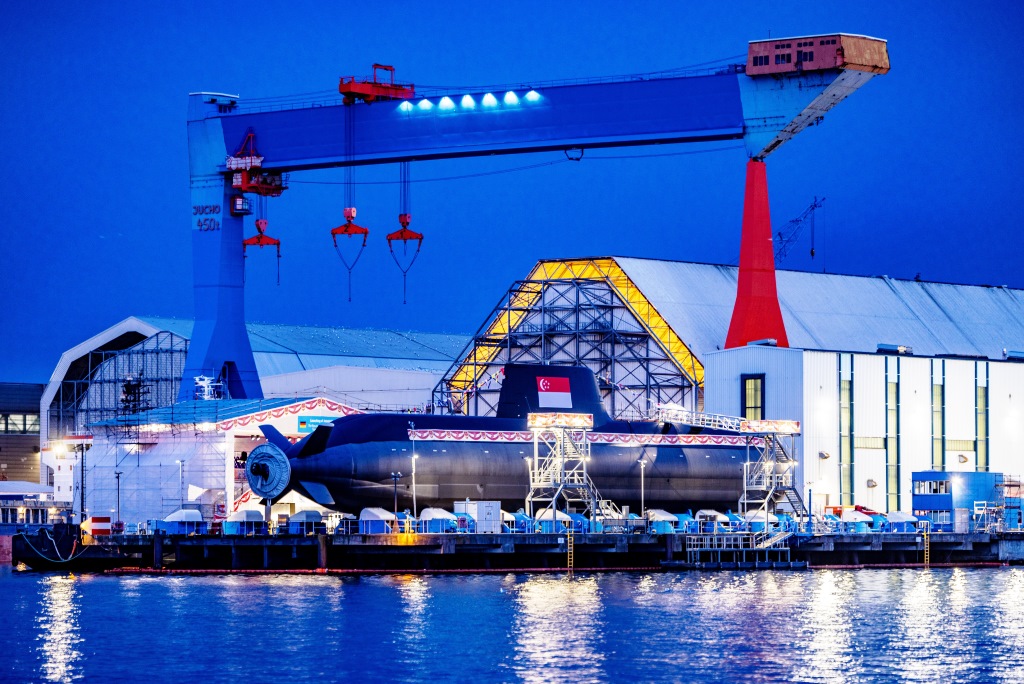1. There are still many unanswered questions about what went down on voting day.
Although the story of the elections has now largely turned to vote counting and results, there are still difficult questions – which the IEC has not shown much appetite for answering – about what happened on voting day.
A woman outside a polling station in Johannesburg on 29 May 2024. (Photo: EPA-EFE / Kim Ludbrook)
The claims from the IEC that the long queues were largely the result of high voter turnout seem increasingly implausible amid a plethora of eyewitness accounts of malfunctioning scanners and inefficient voter processing – as well as statistical modelling suggesting that turnout may in fact have fallen quite considerably since 2019.
IEC chairperson Mosotho Moepya insisted at a Thursday afternoon briefing that the elections body was not “defensive” about criticism: “We are going to listen to and observe the things that are being raised,” he said.
Read more in Daily Maverick: Elections dashboard
But in totality, the IEC has yet to acknowledge that significant problems were clearly experienced in many parts of the country. The reality is, however, that since 1994 it has been unthinkable for people to wait as long as nine hours to vote – as was the case for some on 29 May.
2. The IEC seems to be changing its tune on the claims of high voter turnout.
Here’s what IEC CEO Sy Mamabolo said about voter turnout on Wednesday evening: “Suffice to say, it will probably be well beyond the 66% we had in 2019”.
Throughout Wednesday, the long queues in voting were predominantly ascribed on the part of the IEC to the high voter turnout.
On Thursday afternoon, at another briefing, Mamabolo said again that delays in counting votes could be attributed in part to “high turnout”.
But by Thursday night, the IEC’s own results dashboard was putting voter turnout at 58.7%. That figure will probably shift because the urban voting districts will see higher voter turnout – but even analysts doing statistical modelling have suggested that the turnout may land in the 50-60% range.
That would represent a big dip from 2019. But when asked about this by Daily Maverick at a briefing at the national results centre on Thursday night, IEC general manager Granville Abrahams appeared to deny that the IEC had ever made claims of high voter turnout this year.
3. We have to wait for the large urban voting districts to get an unambiguous picture of results.
The smaller voting districts report their results first, many of which will be rural. The big urban voting districts from the major metros will be some of the last to come in, and these could make significant differences to the results leaderboard.
In Gauteng, more than 80% of the province’s registered voters are drawn from the metros of the City of Joburg (35%), Tshwane (24.7%) and Ekurhuleni (25%).
In KwaZulu-Natal, eThekwini accounts for 35% of all voters in the province. In the Western Cape, 63% of voters are drawn from the City of Cape Town.
In total, the IEC’s Abrahams said on Thursday, the metros account for more than 55% of all voters nationally.
In other words, we need the results from the City of Joburg, Tshwane, Ekurhuleni and eThekwini to start building a reliable picture of the national results.
4. Jacob Zuma is back, and he has eaten the ANC’s lunch (and the IFP’s, and the EFF’s).
It was widely predicted that the ANC would lose its majority in these elections. But few analysts gave much credence to polls suggesting that the MK party’s results could reach double digits nationally.
But it is now clear that the party has done substantially better than many anticipated – not just in KwaZulu-Natal, but in provinces such as Mpumalanga too.
Given that the party has barely any other recognisable figures in it beyond the Zuma family, has existed for less than six months and is not known to have much in the way of national party infrastructure, almost all of this has to be credited to the potency of the appeal of former president Jacob Zuma.
At the national results centre on Thursday, there were worried faces on party agents from the ANC and the IFP – particularly when scrutinising the provincial leaderboard for KwaZulu-Natal, where the MK party very quickly established a barnstorming lead over its two rivals.
It’s safe to say that the MK party’s votes are coming at the expense of both the ANC and the IFP. But they are also doubtless costing the EFF, whose national leadership was AWOL from the results centre on Thursday.
Duduzile Zuma on Thursday said that the party ruled out coalitions with either the DA or the ANC. This could change, since the Zumas are not known for unyielding political principles. It suggests, however, that MK’s likeliest coalition partner would be the EFF – but will leader Julius Malema’s ego permit him to enter into political matrimony with the upstarts who look to have cost him at least some parliamentary seats?
5. It’s not looking good for the newbies or the independents.
It was always likely that new arrivals like Rise Mzansi and Build One South Africa would draw their votes primarily from the urban centres, so you should expect their vote count to rise and build respectively once those ballots are counted.
But it does seem clear that these new outfits are not going to manage any kind of substantial electoral upheaval, and certainly not anything along the lines of the MK party.
Things were looking equally bleak for the independent candidates on Thursday night, with most looking at only a few hundred votes. When it comes to a candidate like Zackie Achmat, whose profile speaks for itself, this vote share is also likely to rise once more voting districts within the City of Cape Town report results.
But even if the votes of all independent candidates were pooled, at the time of writing it looked like they might not amount to a single seat in the National Assembly.
Given the confusion and logistical difficulties caused by the introduction of a third ballot to accommodate these candidates, some will be asking whether South Africa was ready. DM
![]()



















Discussion about this post